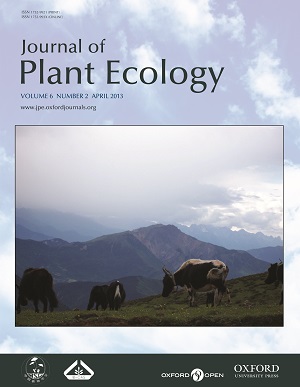Current Issue
-
 Volume 6 Issue 2
Volume 6 Issue 2
Yaks grazing on an alpine meadow in Baima Snow Mountain in northwest Yunnan, China. Located in the Three Parallel Rivers World Heritage Site, the alpine meadows provide summer pastures for Tibetan yak herders and a source of important medicinal and horticultural plants. Increases in unpalatable shrubs are resulting in shrinking grasslands, reducing dairy outputs, and adversely affecting yak health. Photo and research on the impacts of grazing on alpine meadow plant biodiversity was conducted by Michelle A. Haynes et al.
IF: 3.9
CiteScore: 5.7
CiteScore: 5.7
Editors-in-Chief
Yuanhe Yang
Bernhard Schmid
Yuanhe Yang
Bernhard Schmid
CN 10-1172/Q
ISSN 1752-9921(print)
ISSN 1752-993X(online)
ISSN 1752-9921(print)
ISSN 1752-993X(online)







